Efficient floor cleaning requires understanding and tailoring your approach based on floor type—wood, tile, or carpet. Use appropriate tools like a powerful vacuum with HEPA filter, quality mop, and specialized cleaning solutions for each material. Regularly clear debris, vacuum/sweep, and wipe down floors. For deep cleaning, follow tailored methods: tile with dedicated cleaner, wood with mild detergent, and carpets with specific cleaning solutions. Prevent stains through prompt action and regular upkeep in high-traffic areas. Polishing and watering maintain hardwood's beauty and longevity. Steam clean for deep disinfection, adjusting methods based on floor type. Regular cleaning ensures health, hygiene, and a home's aesthetic appeal while preserving flooring investment. Opt for green cleaning solutions to avoid harsh chemicals and their environmental impact.
Keeping your home’s floors clean and sparkling is essential for maintaining a hygienic and aesthetically pleasing living space. This comprehensive guide delves into the world of residential floor cleaning, covering everything from understanding diverse floor types to mastering deep cleaning techniques for tiles, wood, and carpets. Learn about essential tools, effective vacuuming methods, stain removal, and eco-friendly cleaning solutions. By following these expert tips, you’ll achieve a gleaming home environment that’s both healthy and beautiful.
Understanding Different Floor Types and Their Cleaning Needs
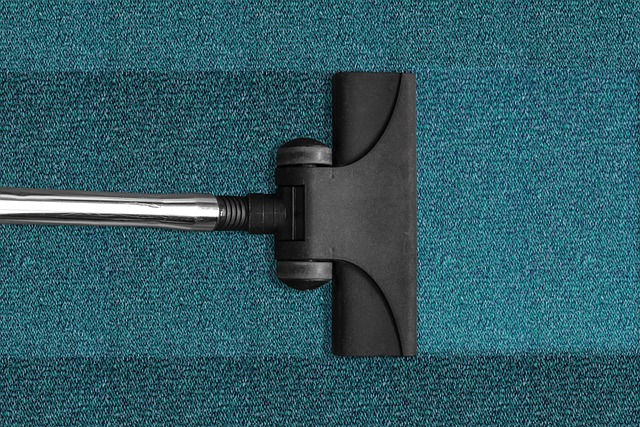
Knowing your floor type is crucial for effective residential floor cleaning. Different materials, like wood, tile, or carpet, require distinct care to maintain their aesthetics and longevity. Wood floors, for instance, need regular sweeping and damp mopping to prevent scratches, while tile floors benefit from pH-neutral cleaners to avoid damaging their grout. Carpeting demands a deeper clean with vacuuming and spot treatment to eliminate dirt and stains.
Each floor type has its unique challenges and cleaning methods. Understanding these nuances ensures you use the right tools and products, extending the life of your flooring and keeping your home spick and span. Effective floor cleaning involves tailoring your approach based on material, ensuring a sparkling and healthy living environment.
Essential Tools and Equipment for Effective Residential Floor Cleaning

When it comes to effective residential floor cleaning, the right tools and equipment make all the difference. A good start is having a vacuum cleaner with powerful suction and various attachments to tackle different floor types, from carpets to hardwood. For deep cleaning, an upright or canister vacuum with a HEPA filter will capture allergens and dust effectively.
Additionally, investing in a quality mop is essential. Consider a combination of a traditional mop head for general cleaning and microfiber pads for more thorough disinfection. Don’t forget the importance of floor cleaning solutions – use all-purpose cleaners or specialized products tailored to your flooring material to ensure optimal results without damaging finishes.
Step-by-Step Guide to Vacuuming and Sweeping
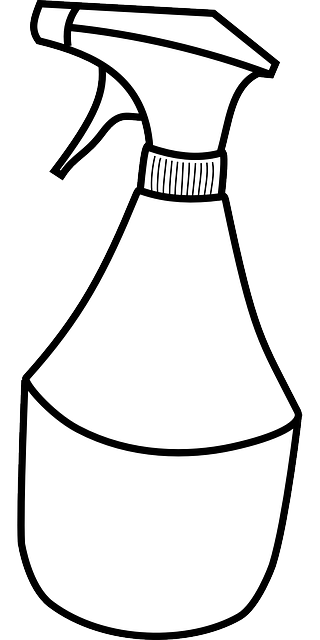
Start by removing any loose debris or dirt from the floor using a broom or dustpan. This initial step is crucial for efficient vacuuming and sweeping, ensuring your cleaning tools pick up the most significant particles first. Once the larger items are cleared, it’s time to vacuum. Start in one corner of the room and move methodically across the floor, following the edges and corners closely. Use a vacuum attachment if necessary to reach tight spaces under furniture.
For sweeping, use a push broom or a sweep stick designed for floors. Sweep in long, even strokes, covering the entire floor area. Ensure you get into all corners and along baseboards. After vacuuming and sweeping, give the floor a final pass with a microfiber cloth or mop to catch any remaining dust particles, leaving your space spotless and ready for the next step in your floor cleaning routine.
Deep Cleaning Techniques for Tile, Wood, and Carpeted Floors
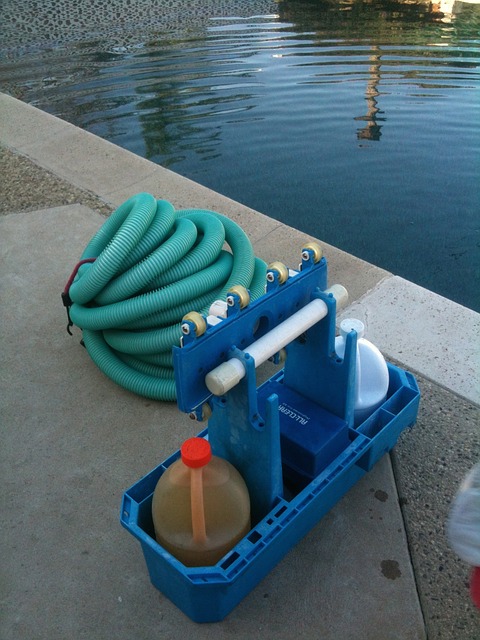
When it comes to deep cleaning techniques for different floor types, each material requires a tailored approach to ensure optimal results and prolong its lifespan. For tile floors, start by sweeping or vacuuming to remove loose dirt and debris. Then, use a floor cleaner designed for tiles to tackle stubborn stains and grime. Consider using a toothbrush-like tool to scrub hard-to-reach areas around fixtures and edges. Rinse thoroughly with warm water and dry with a clean towel or mop to prevent water spots.
Wood floors need a more delicate touch. Sweep or vacuum regularly to avoid scratching. For deep cleaning, use a wood floor cleaner or a mild detergent diluted in warm water. Apply the solution with a microfiber mop, ensuring you don’t saturate the wood. Always wipe dry afterward. Avoid using harsh chemicals or excessive water as they can damage the wood. For carpeted floors, vacuum first to remove surface dirt and dust. Then, use a carpet cleaning solution suitable for your carpet type, following the manufacturer’s instructions. This will help eliminate deep-seated stains and odors. Rinse with clean water if necessary and allow the carpet to dry thoroughly before walking on it again.
Removing Stains and Discoloration from Your Home's Flooring
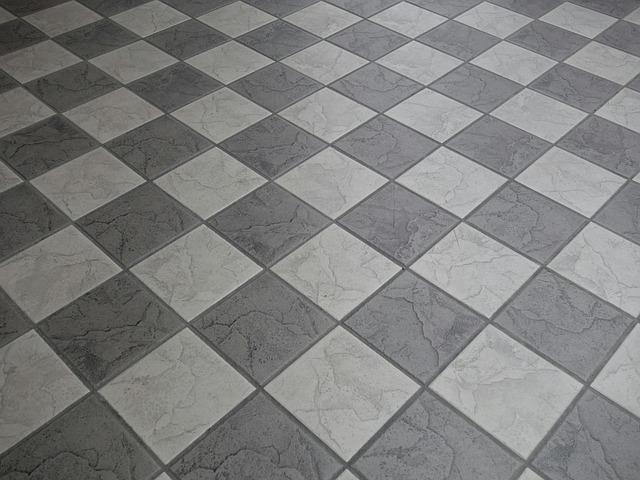
Removing stains and discolouration from your home’s flooring is an essential part of regular floor cleaning. Whether it’s a spill, pet accidents, or foot traffic, stains can accumulate over time, affecting the overall appearance of your floors. The key to effective stain removal is acting quickly. Blot any spills immediately to prevent seeping into the fibres, and regularly clean high-traffic areas to minimise wear and tear.
For stubborn stains, invest in quality floor cleaning products designed for your flooring type. Enamel or vinegar-based cleaners are safe for most surfaces and can effectively lift discolouration without causing damage. Always test cleaning solutions on a small, hidden area first to ensure compatibility with your floors. Consistent floor cleaning not only keeps your home looking neat but also prolongs the life of your flooring investment.
The Art of Polishing and Watering Hardwood Floors
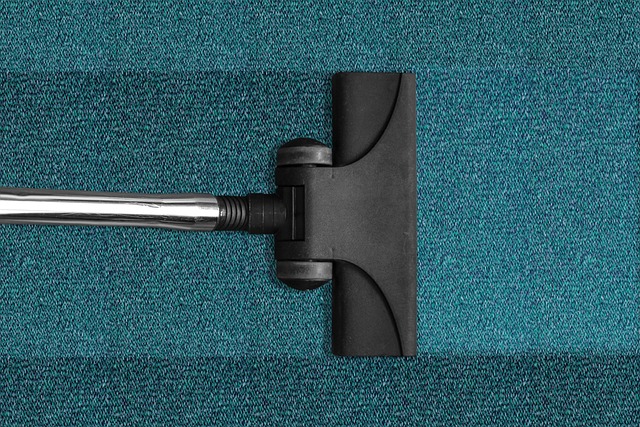
The art of floor cleaning extends beyond mere sweeping and mopping. When it comes to hardwood floors, polishing and watering are essential techniques for maintaining their natural beauty and longevity. Polishing involves using specialized compounds and tools to buff out imperfections, revealing a smooth, glossy finish that accentuates the wood’s unique grain pattern. This meticulous process not only enhances aesthetics but also creates a protective layer, shielding the floor from scratches and stains.
Watering, on the other hand, requires a delicate balance. Proper watering involves dampening the floor with clean water at the right temperature, allowing it to penetrate the wood’s pores before quickly drying. This deep cleaning method helps to remove embedded dirt and grime while minimizing moisture damage. Regular polishing and watering not only keeps hardwood floors looking new but also ensures they remain safe for use, providing a comfortable and aesthetically pleasing space for homeowners and their families.
Steam Cleaning: Benefits and Best Practices for Different Floor Surfaces

Steam cleaning is a popular floor cleaning method, offering numerous benefits for various floor surfaces. It’s an efficient way to deep clean and sanitize hard floors, carpets, and upholstery. The hot steam cuts through dirt, grime, and even stubborn stains, leaving surfaces sparkling clean. One of its key advantages is the absence of harsh chemicals, making it a safer option for homes with pets or children.
When it comes to best practices, different floor types require tailored care. For instance, tile and vinyl floors benefit from steam cleaning due to their water-resistant nature. However, wood floors need extra caution; excessive moisture can damage them. Using a specialized wood floor steam cleaner with adjustable settings ensures the right amount of humidity. Similarly, carpets should be treated with care; regular spot cleaning prevents mold growth, and allowing proper drying time after steam cleaning is essential for maintaining their quality.
Tips for Maintaining a Sparkling and Hygienic Living Space

Keeping your living space sparkling and hygienic is not just about aesthetics; it’s also crucial for maintaining good health. Regular floor cleaning is a significant part of this process. Start by defining a cleaning schedule that suits your lifestyle, ensuring high-traffic areas like kitchens and bathrooms are given extra attention. Vacuum or sweep daily to remove dust and debris, focusing on corners and beneath furniture. For deeper cleaning, use a mop with warm water and mild detergent, making sure to rinse thoroughly to avoid residue buildup.
Invest in high-quality cleaning tools, such as microfiber cloths and mops, which are effective at picking up dirt and bacteria without leaving scratches or fumes. Don’t forget to clean along the baseboards and door jams regularly, as these areas often gather dust and allergens. Additionally, remember to sanitize hard surfaces periodically with disinfectant wipes, especially during flu seasons, to create a hygienic environment for you and your family.
Green Cleaning Solutions for Eco-Conscious Homeowners

Eco-conscious homeowners are increasingly seeking green cleaning solutions for their residential floor cleaning routines. Traditional floor cleaning products often contain harsh chemicals that can be detrimental to both health and the environment, making sustainable alternatives a priority. Fortunately, the market now offers a wide array of eco-friendly options designed to clean effectively without compromising on safety or causing environmental damage.
One popular green cleaning solution for floors is using natural ingredients like vinegar and baking soda. These simple, affordable substances can tackle tough stains and grime while leaving behind a fresh, clean scent. For example, a mixture of equal parts white vinegar and water can be used to mop hardwood floors, effectively removing dirt and dust without the need for toxic chemicals. Additionally, essential oils can be added to cleaning solutions for a pleasant aroma, further enhancing the eco-friendly appeal.
